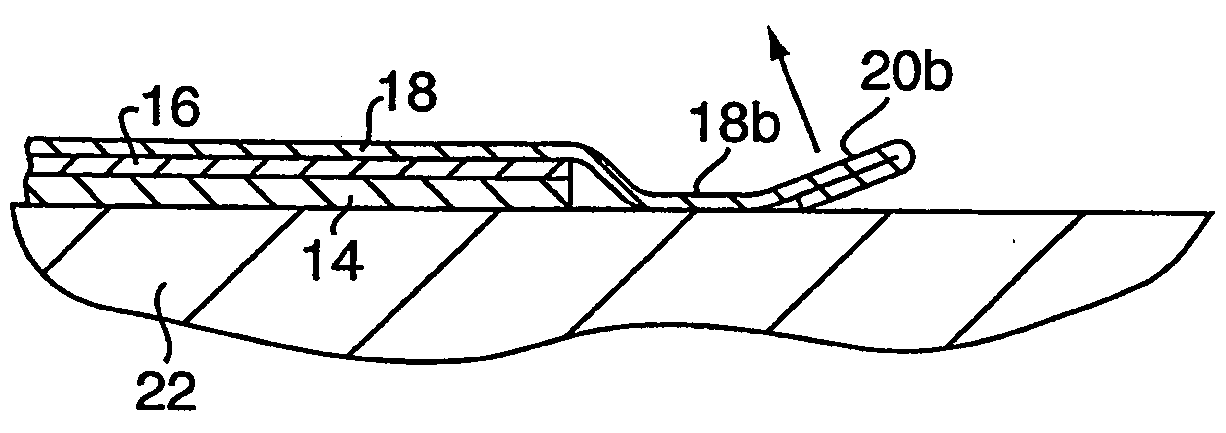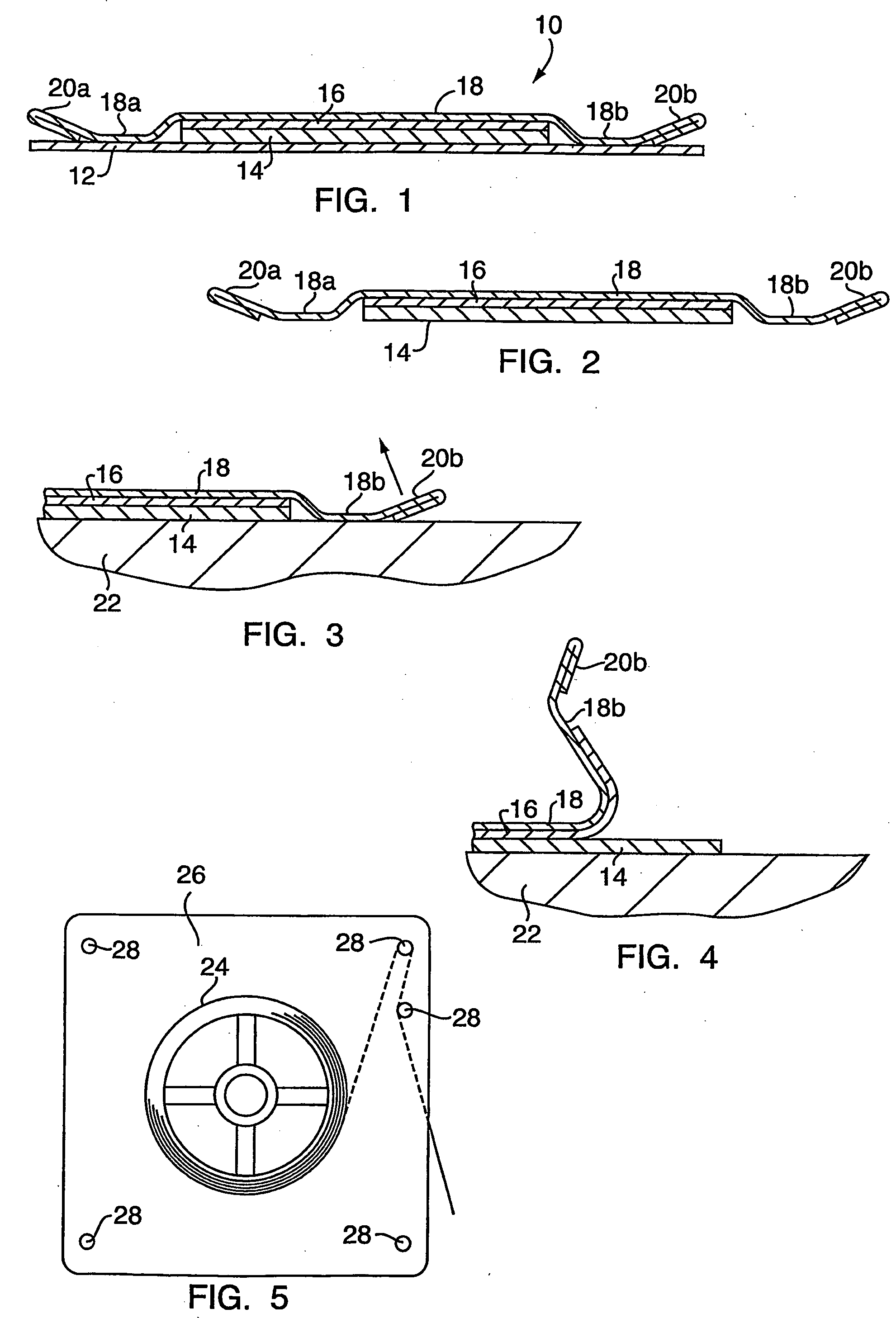Novel Packaging Solution for Highly Filled Phase-Change Thermal Interface Material
a technology of thermal interface material and packaging solution, which is applied in the direction of packaging, liquid handling, transportation and packaging, etc., can solve the problems of affecting easy damage or improper application, and well-known impede the flow of heat, so as to facilitate the transfer of heat, improve reliability, and put in position quickly and easily
- Summary
- Abstract
- Description
- Claims
- Application Information
AI Technical Summary
Benefits of technology
Problems solved by technology
Method used
Image
Examples
Embodiment Construction
[0025]The detailed description set forth below is intended as a description of the presently preferred embodiment of the invention, and is not intended to represent the only form in which the present invention may be constructed or utilized. The description sets forth the functions and sequences of steps for constructing and operating the invention. It is to be understood, however, that the same or equivalent functions and sequences may be accomplished by different embodiments and that they are also intended to be encompassed within the scope of the invention.
[0026]Referring now to the figures, and initially to FIG. 1, there is shown a preferred packaging system 10 for a thin layer of material 14, the latter preferably comprising a single layer or film of thermally-conductive material having phase change properties. In this regard, it is expressly contemplated that packaging 10 will be particularly well suited to facilitate the manufacturing, shipping, handling and ultimate applicat...
PUM
 Login to View More
Login to View More Abstract
Description
Claims
Application Information
 Login to View More
Login to View More - R&D
- Intellectual Property
- Life Sciences
- Materials
- Tech Scout
- Unparalleled Data Quality
- Higher Quality Content
- 60% Fewer Hallucinations
Browse by: Latest US Patents, China's latest patents, Technical Efficacy Thesaurus, Application Domain, Technology Topic, Popular Technical Reports.
© 2025 PatSnap. All rights reserved.Legal|Privacy policy|Modern Slavery Act Transparency Statement|Sitemap|About US| Contact US: help@patsnap.com


